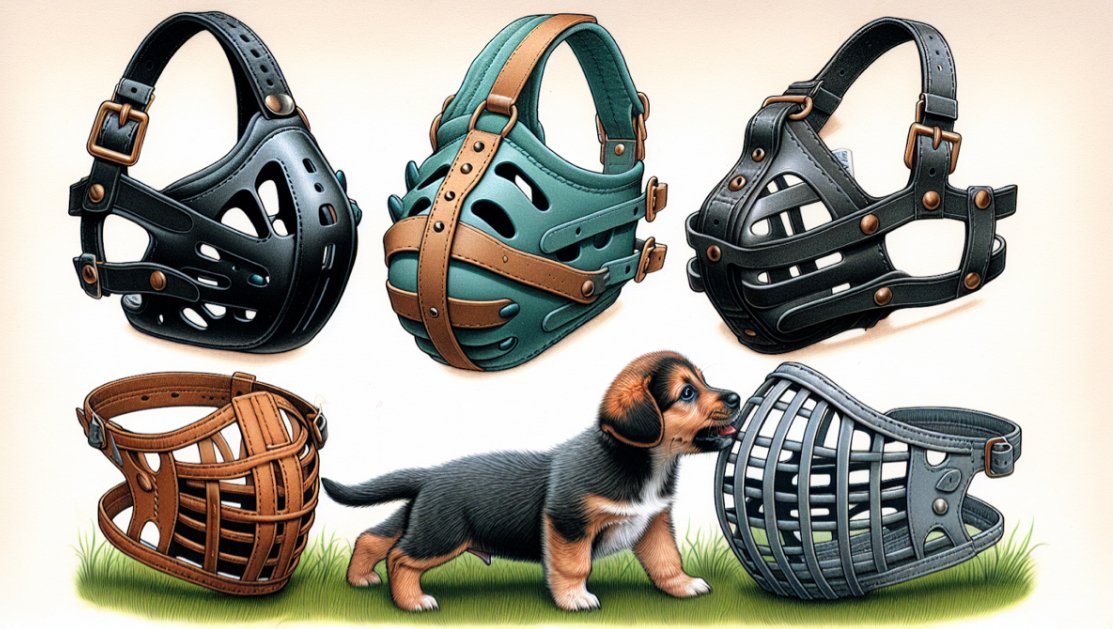Pets
How to Choose the Best Muzzle for Your Dog

When it comes to ensuring the safety of your dog and those around them, a muzzle can be an essential tool. However, choosing the right muzzle for your dog can be a daunting task. In this comprehensive guide, we’ll explore the various types of dog muzzles available and help you determine which one is best suited for your furry friend.
Why Use a Dog Muzzle?
There are several reasons why you might consider using a muzzle for your dog:
Safety
If your dog has a history of biting or aggressive behaviour, a muzzle can prevent them from causing harm to others.
Medical Necessity
Some medical procedures or grooming sessions may require your dog to wear a muzzle to prevent them from interfering or biting.
Legal Requirements
Certain breeds may be required by law to wear a muzzle in public spaces.
Types of Dog Muzzles
Basket Muzzles
Basket muzzles are the most common type of dog muzzle. They are made of plastic or wire and have a basket-like shape that allows your dog to breathe, pant, and drink water easily. These muzzles are ideal for long-term use and are often recommended by veterinarians and dog trainers.
Soft Muzzles
Soft muzzles are made of fabric or neoprene and are designed for short-term use. They are less restrictive than basket muzzles but can still prevent your dog from biting. However, they may not allow your dog to pant or drink water as easily.
Leather Muzzles
Leather muzzles are similar to soft muzzles but are made of leather. They are more durable than soft muzzles and can be a good choice for dogs with short snouts.
Silicone Muzzles
Silicone muzzles are a newer type of muzzle that are made of flexible silicone. They are lightweight and comfortable for dogs to wear but may not be as durable as other types of muzzles.
Factors to Consider When Choosing a Muzzle
Size and Fit
It’s essential to choose a muzzle that fits your dog properly. A muzzle that is too small can be uncomfortable and restrict your dog’s breathing, while a muzzle that is too large can allow your dog to remove it easily.
To determine the right size muzzle for your dog, measure the circumference of their snout and the length from the tip of their nose to the base of their ears. Consult the manufacturer’s sizing chart to find the appropriate size.
Comfort
Your dog’s comfort should be a top priority when choosing a muzzle. Look for muzzles with soft padding or edges to prevent chafing or rubbing. Ensure that the muzzle allows your dog to pant and drink water easily.
Durability
Consider the material and construction of the muzzle. Plastic or wire basket muzzles are generally more durable than soft or silicone muzzles. Look for muzzles with reinforced stitching or strong buckles to ensure they can withstand regular use.
Visibility
Some muzzles may obstruct your dog’s vision, which can be stressful for them. Look for muzzles with a wide field of vision or those made of transparent materials.
Introducing Your Dog to a Muzzle
Introducing your dog to a muzzle should be a gradual process to ensure they are comfortable and accepting of it. Here are some steps to follow:
Start with Positive Associations
Begin by allowing your dog to sniff and investigate the muzzle. Offer treats and praise when they show interest in it.
Use Treats as a Reward
Place treats inside the muzzle and encourage your dog to put their nose inside to retrieve them. This will help them associate the muzzle with positive experiences.
Gradually Increase Wear Time
Once your dog is comfortable putting their nose inside the muzzle, slowly increase the amount of time they wear it. Start with just a few seconds and gradually work up to longer periods.
Offer Plenty of Praise and Rewards
Throughout the process, offer your dog plenty of praise and rewards for their cooperation. This will help reinforce positive associations with the muzzle.
Proper Muzzle Use and Maintenance
Supervision
Always supervise your dog while they are wearing a muzzle. Never leave them unattended or allow them to play with other dogs while muzzled.
Regular Breaks
Ensure that your dog gets regular breaks from wearing the muzzle, especially if they are wearing it for extended periods. Remove the muzzle during meals and allow them to drink water freely.
Cleaning and Inspection
Regularly clean and inspect your dog’s muzzle for signs of wear or damage. Replace the muzzle if it becomes damaged or no longer fits properly.
Alternatives to Muzzles
In some cases, a muzzle may not be the best solution for your dog. If your dog’s aggressive behaviour stems from fear or anxiety, a muzzle may only exacerbate the problem. In these cases, working with a professional dog trainer or behaviourist to address the underlying issues may be more effective.
Other alternatives to muzzles include:
Training and Socialization
Proper training and socialisation can help prevent aggressive behaviour and reduce the need for a muzzle.
Avoidance
If your dog is reactive to certain triggers, such as other dogs or people, avoiding those triggers may be the best solution.
Medication
In some cases, medication may be necessary to help manage your dog’s anxiety or aggression. Consult with your veterinarian to determine if this is an appropriate option for your dog.
Conclusion
Choosing the right muzzle for dog requires careful consideration of their individual needs and temperament. By selecting a muzzle that is properly fitted, comfortable, and allows for easy breathing and drinking, you can ensure that your dog is safe and happy while wearing it.
Remember to introduce the muzzle gradually and offer plenty of positive reinforcement throughout the process. With patience and consistency, your dog can learn to accept and even enjoy wearing their muzzle.

-

 Technology8 months ago
Technology8 months agoExploring Entretech.org: Unveiling the Future
-

 Life Style8 months ago
Life Style8 months agoExploring Myfavouriteplaces.org:// blog: A Journey Begins
-

 Technology8 months ago
Technology8 months agoGPT66X: Revolutionizing Language Models
-

 Eentertainment9 months ago
Eentertainment9 months agoThe Flower of Veneration Chapter 1: A Journey into Intriguing Realms
-

 Games8 months ago
Games8 months agoFour Digits to Memorize: Unlocking the Power of Memory
-

 Technology9 months ago
Technology9 months agoAmazons GPT55X: Revolutionizing Natural Language Processing
-

 Technology8 months ago
Technology8 months agoUnlocking the Potential of TrendzGuruji.me for Awareness
-

 Technology9 months ago
Technology9 months agoUnderstanding “qxefv” and Its Impact on Diverse Industries







